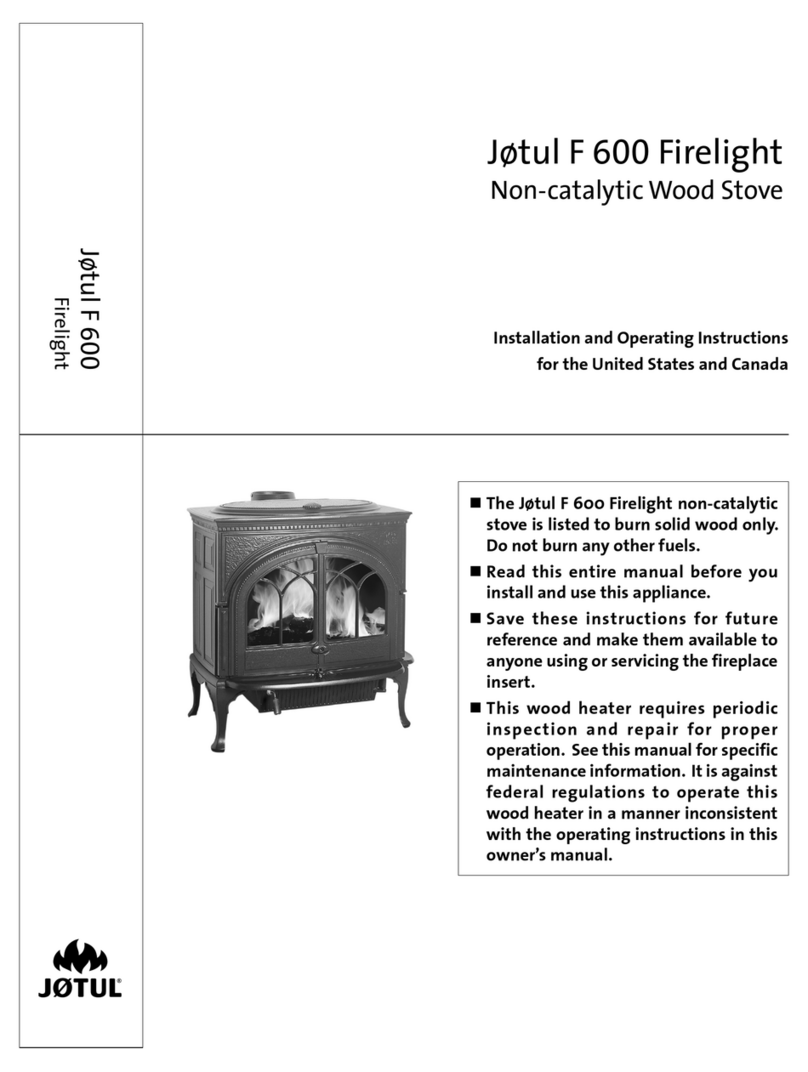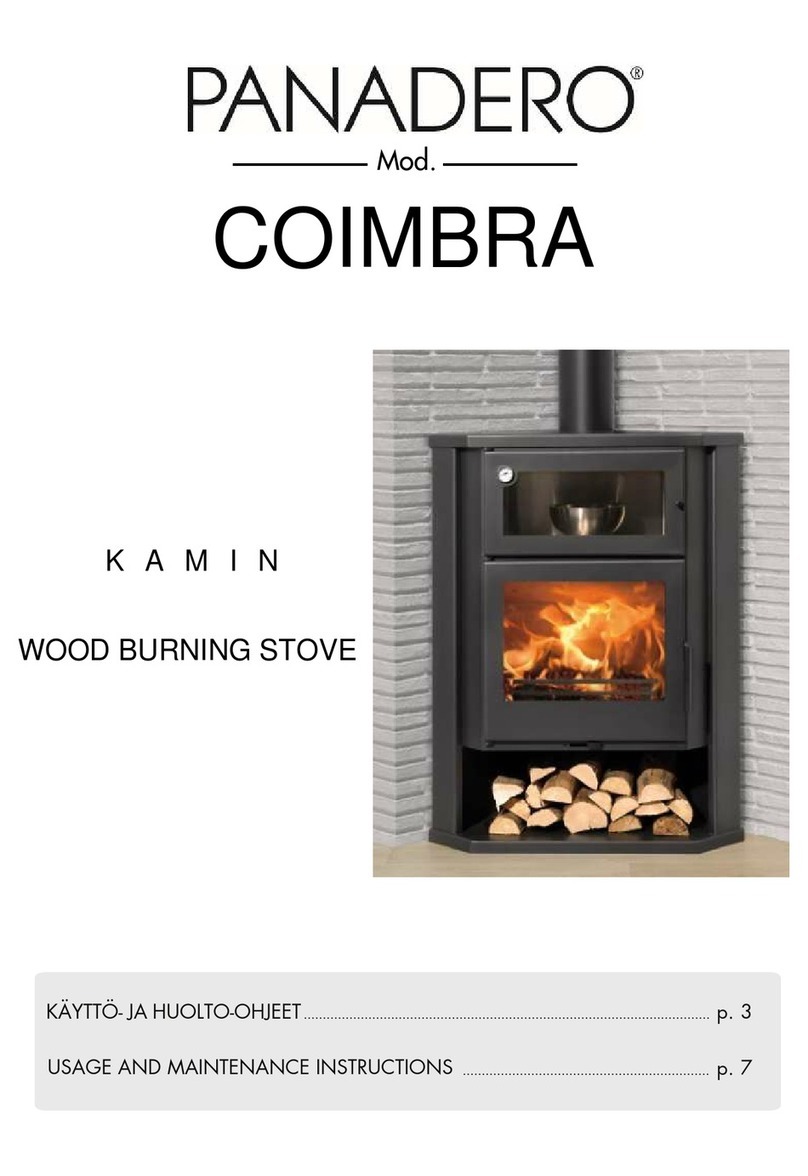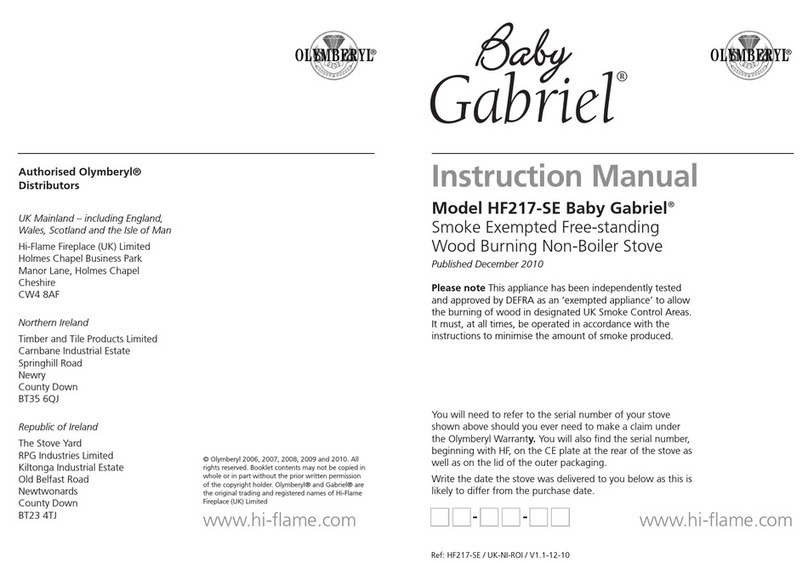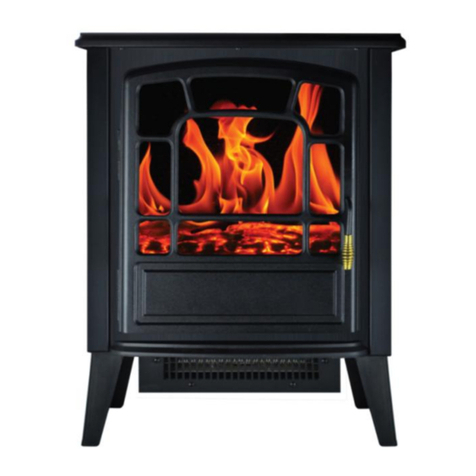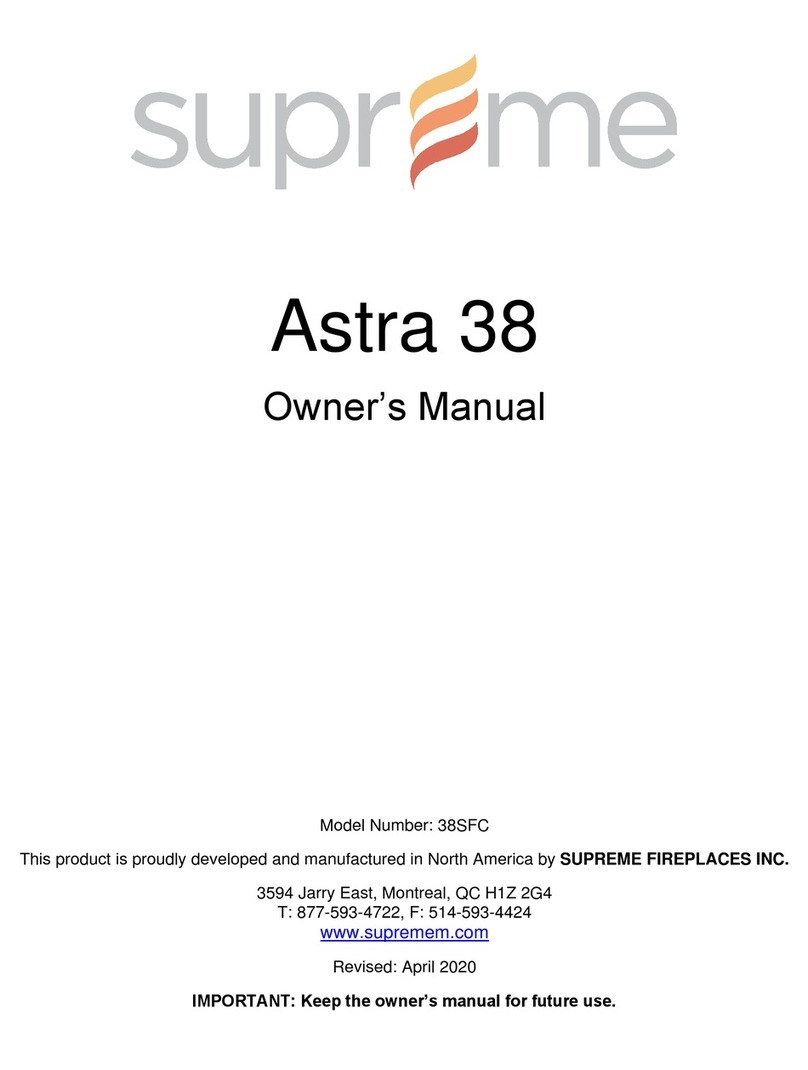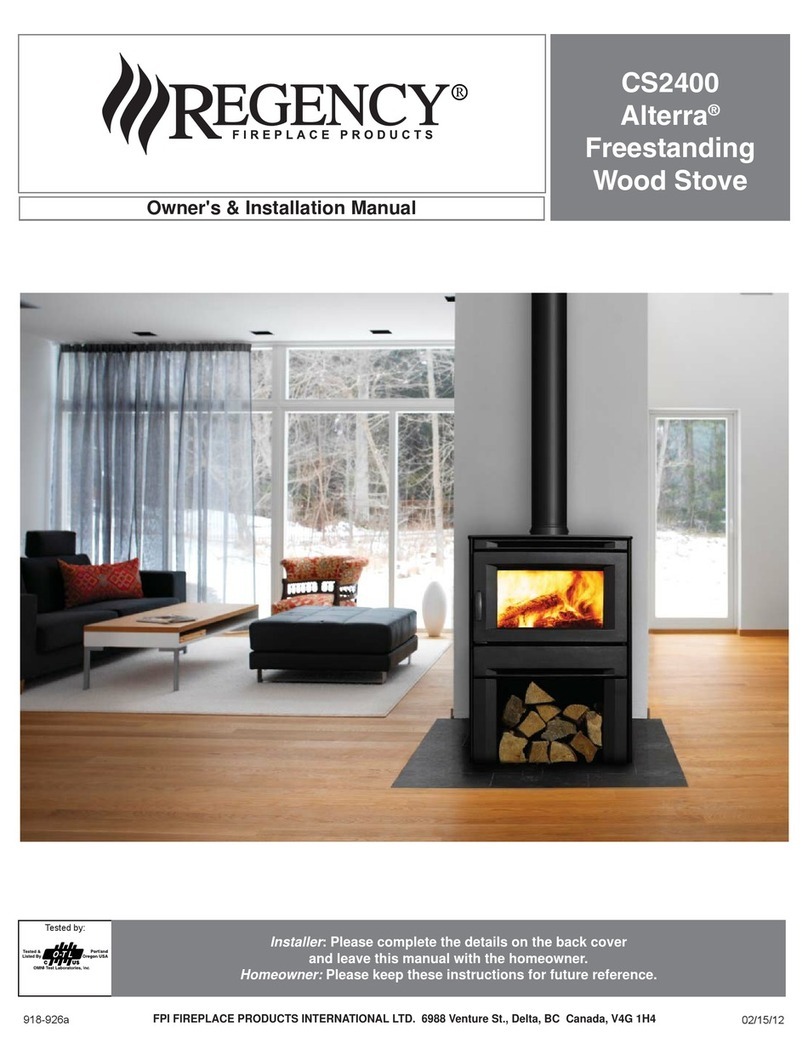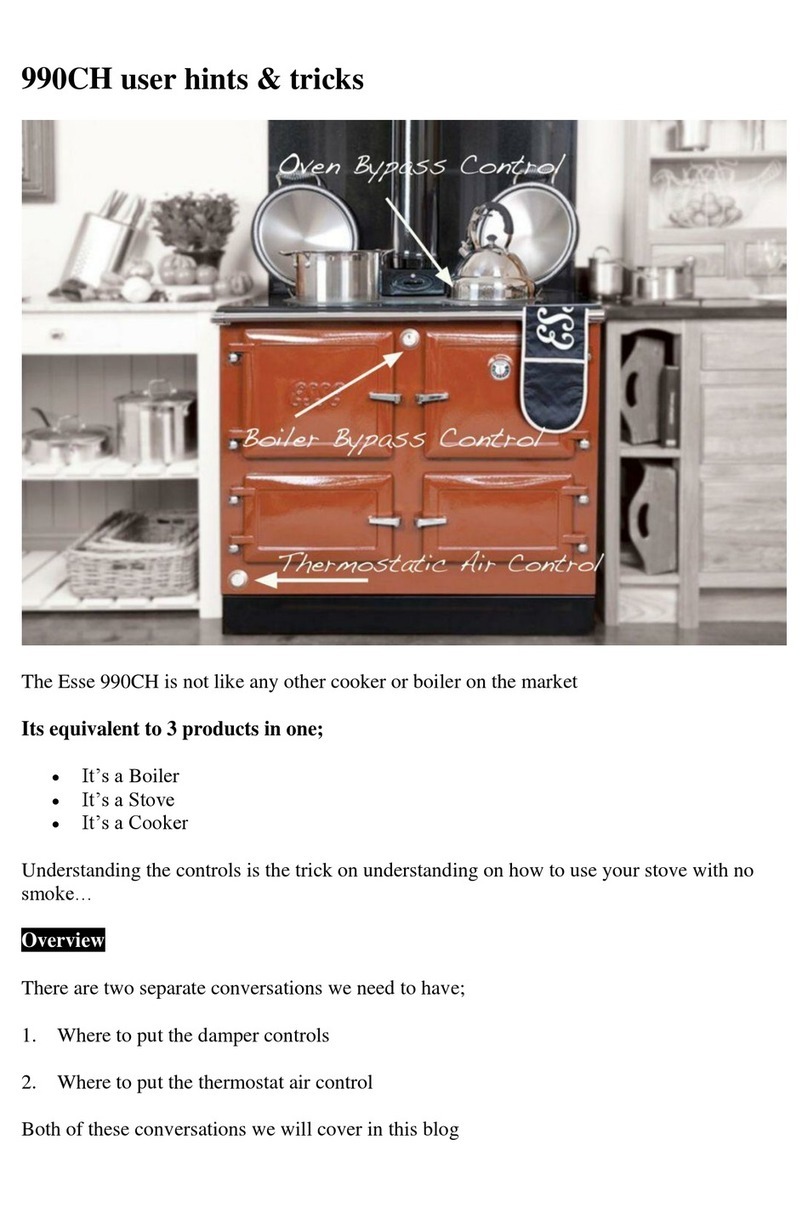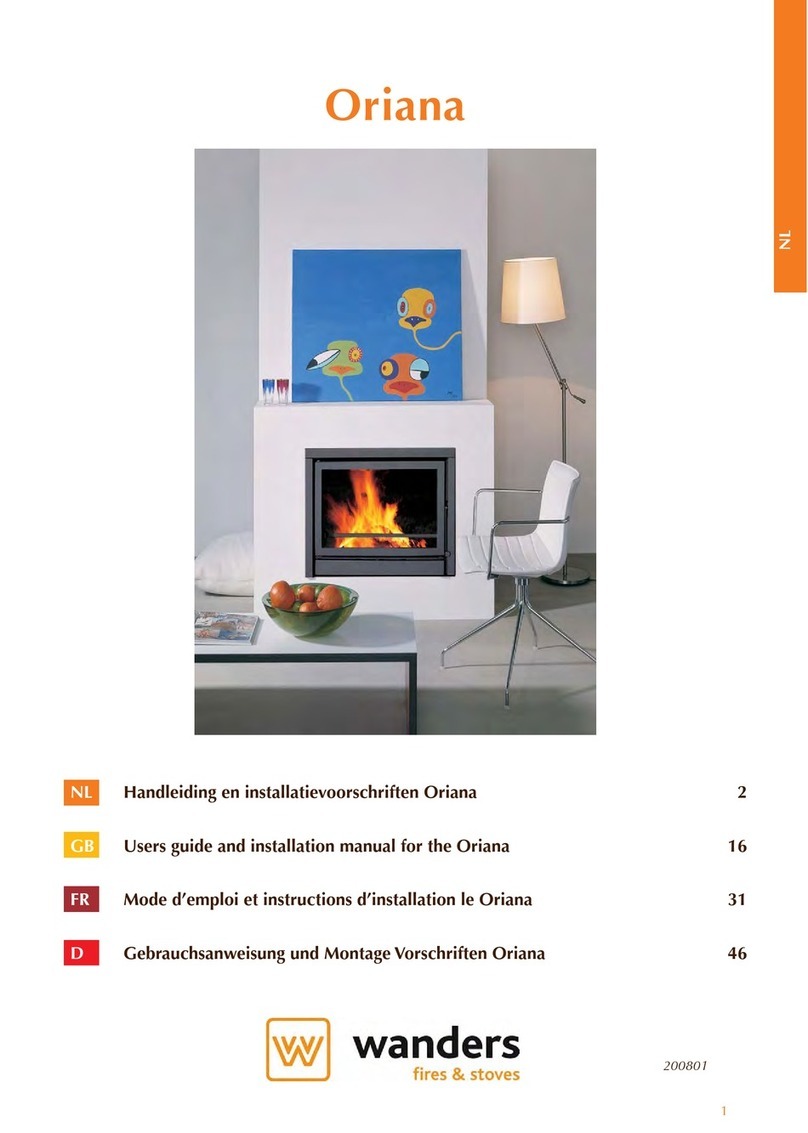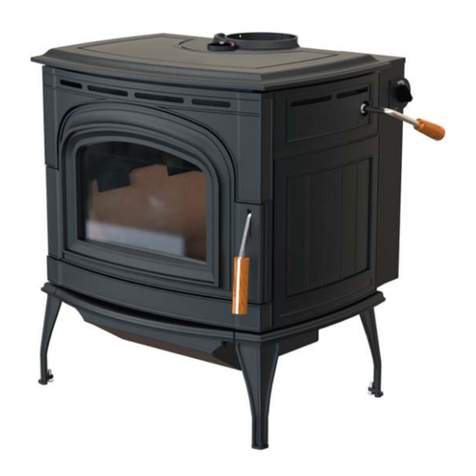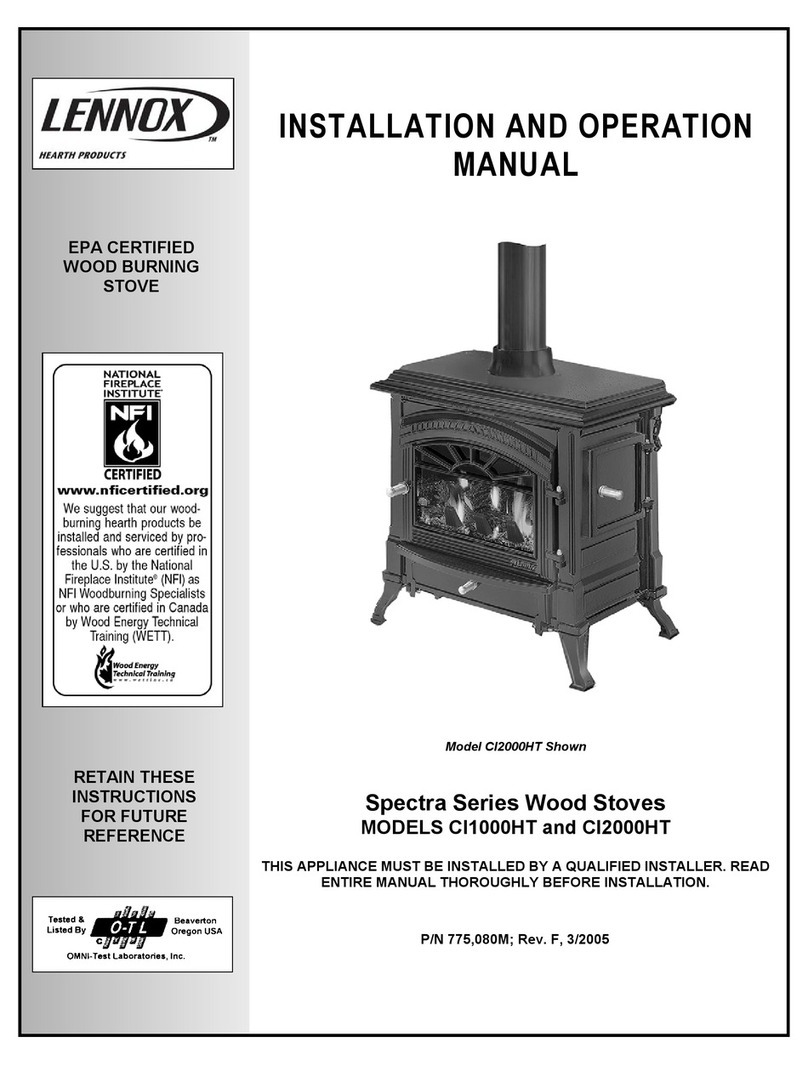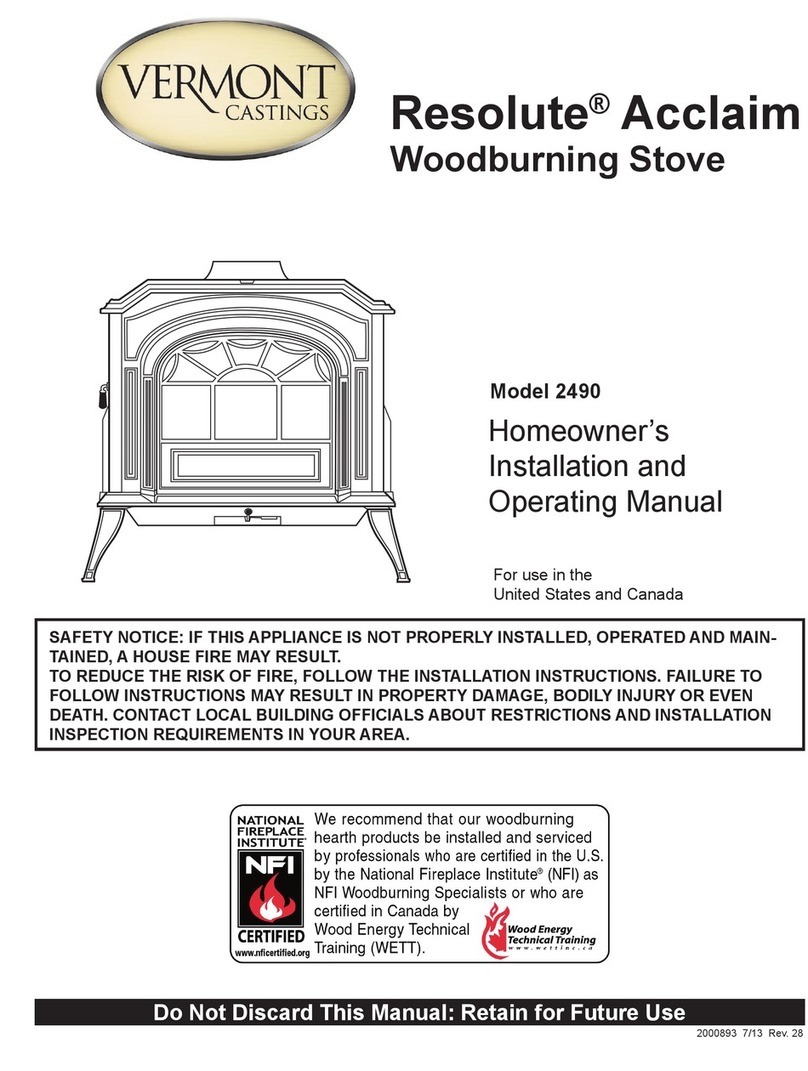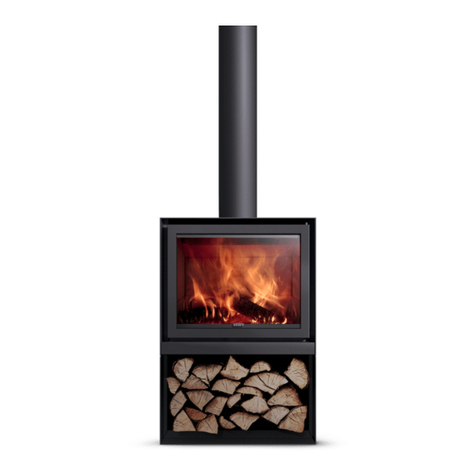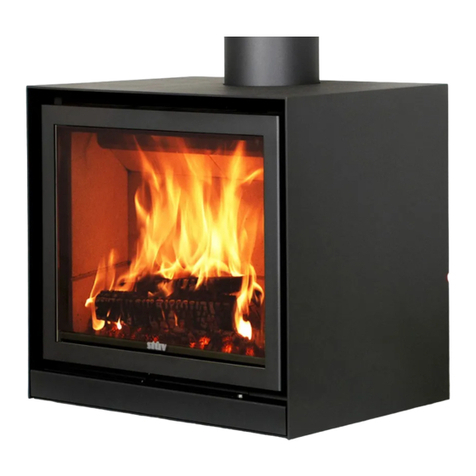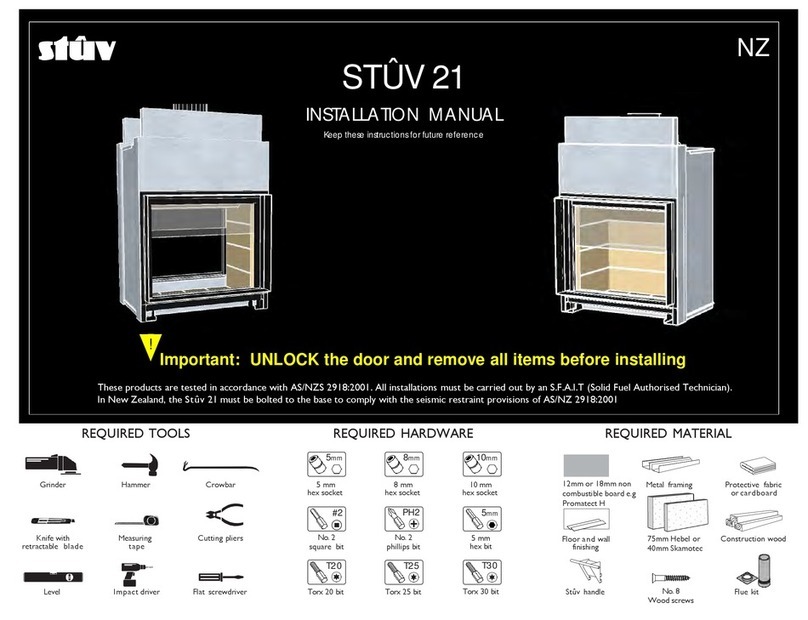
6
The installation instructions for your wood heater are
compliant with the UUL-1482-7 & ULC-S628 standards.
They must be strictly followed in order to prevent any
risk of major problems. Please read carefully this manual
before installing or operating your wood heater. If your
wood heater is incorrectly installed, a fire might result
which would destroy your house.
This wood heater needs periodic inspection and repair
for proper operation. It’s against federal regulations to
operate this wood heater in a manner inconsistent with
operating instructions in this manual.
To reduce the risk of fire, follow the installation
instructions. Failure to follow instructions may result in
property damage, bodily injury, or even death.
Consult your local authorities or your insurance company
regarding all applicable regulatory requirements to
obtain a permit and to install your wood heater. Keep this
manual handy so you may refer to it whenever necessary.
CAUTION:
+DO NOT USE CHEMICALS OR FLUIDS TO LIGHT
THE FIRE.
+DO NOT LEAVE THE WOOD HEATER
UNATTENDED WHEN THE DOOR IS SLIGHTLY
OPENED.
+ALWAYS CLOSE THE DOOR AFTER THE
IGNITION.
+DO NOT USE AS FUEL : TRASH, PLASTICS,
GASOLINE, RUBBER? INDUSTRIAL SOLVENTS,
FLAMMABLE LIQUIDS, NAPTHA, HOUSEOLD
GARBAGE, MATERIAL TREATED WITH
PETROLEUM PRODUCTS, LEAVES, PAPER
PRODUCTS, CARDBOARD, SALTWATER
DRIFTWOOD, PAINTED WOOD, ANY
SUBSTANCE THAT EMITS DENSE SMOKE OR
AN OBNOXIOUS ODOR.
+DO NOT CONNECT THE WOOD HEATER TO
ANY HOT AIR DISTRIBUTION SYSTEM.
+HOT WHILE IN OPERATION. KEEP CHILDREN,
CLOTHIN AND FURNITURE AWAY. CONTACT
MAY CAUSE SKIN BURN.
+EQUIPYOUR HOUSE WITH A SMOKE DETECTOR
AND CARBON MONOXIDE MONITORS
Note: We strongly recommend our products to be
installed and serviced by professionals certified by the
Association des Professionnels du Chauffage in Quebec
or by Wood Energy Technology Training for the rest of
Canada, or by the National Fireplace Institute in the U.S.
Les instructions concernant l’installation de votre insert
sont conformes aux normes UL-1482-7 & ULC-S628.
Vous devez les suivre rigoureusement afin d’éliminer
tout risque d’ennuis majeurs. Veuillez lire attentivement
ce manuel avant d’installer ou d’opérer votre insert. Si
votre insert est mal installé, il peut en résulter un incendie
détruisant votre maison.
Cet insert a besoin d’inspection et d’entretien périodiques
pour sa bonne utilisation. L’utilisation contraire au manuel
d’utilisation représente une violation de la loi fédérale.
Pour réduire les risques d’incendie, suivez les instructions
d’installation. Le fait de ne pas respecter les instructions
peut occasionner des dommages à la propriété, des
lésions corporelles et même la mort.
Consultez le représentant de votre municipalité ou
votre compagnie d’assurance concernant les exigences
locales relatives aux permis et à l’installation de votre
insert. Gardez ce manuel pour pouvoir le consulter
ultérieurement
ATTENTION :
+NE PAS UTILISER DES PRODUITS CHIMIQUES
OU AUTRES LIQUIDES POUR ALLUMER LE FEU.
+NE JAMAIS LAISSER L’INSERT SANS
SURVEILLANCE LORSQUE LA PORTE EST
OUVERTE.
+TOUJOURS FERMER LA PORTE APRÈS LA
PÉRIODE D’ALLUMAGE.
+NE PAS BRÛLER DE DÉCHETS, PLASTIQUES,
ESSENCE, CAOUTCHOUC, SOLVENTS
INDUSTRIELS, LIQUIDES INFLAMABLES,
PETROLE, D2CHETS MENAGERS, MATERIAUX
0 BASE DE PRODUITS PETROLIERS, FEUILLES,
PAPIERS, CARTONS, BOIS EXTRAIT D’EAU
SALEE ET SECHÉ, BOIS PEINT, TOUTE
SUBSTANCE EMETTANT DES FUMEES DENSES
ET DES ODEURS FORTES.
+NE PAS CONNECTER L’INSERT À UN SYSTÈME
DE DISTRIBUTION D’AIR CHAUD.
+EQUIPEZ VOTRE MAISON D’UN DETECTEUR
DE FUMEES ET DE MONITEURS MONOXYDE
CARBONE
+L’APPAREIL EST CHAUD LORSQU’EN
FONCTION. GARDEZ LES ENFANTS,
VÊTEMENTS ET MEUBLES HORS DE PORTÉE.
TOUCHER L’APPAREIL POURRAIT CAUSER DES
BRÛLURES.
Note : Nous recommandons fortement que nos produits
soient installés et entretenus par des professionnels
certifiés par l’Association des Professionnels du
Chauffage au Québec ou par Wood Energy Technical
Training pour le reste du Canada, et par la National
Fireplace Institute aux États-Unis.




















